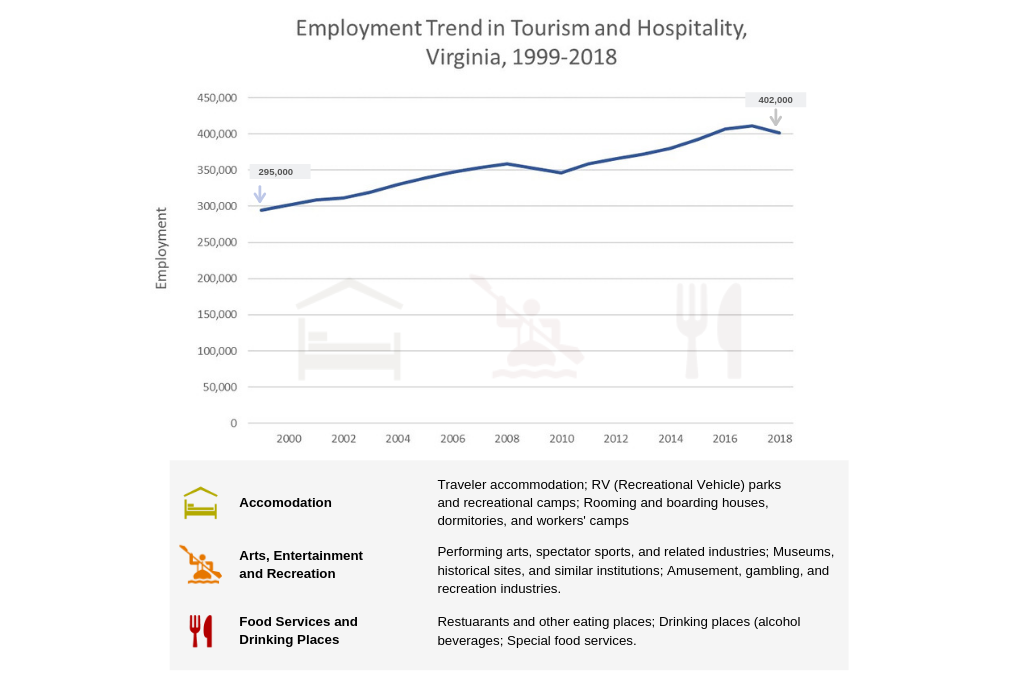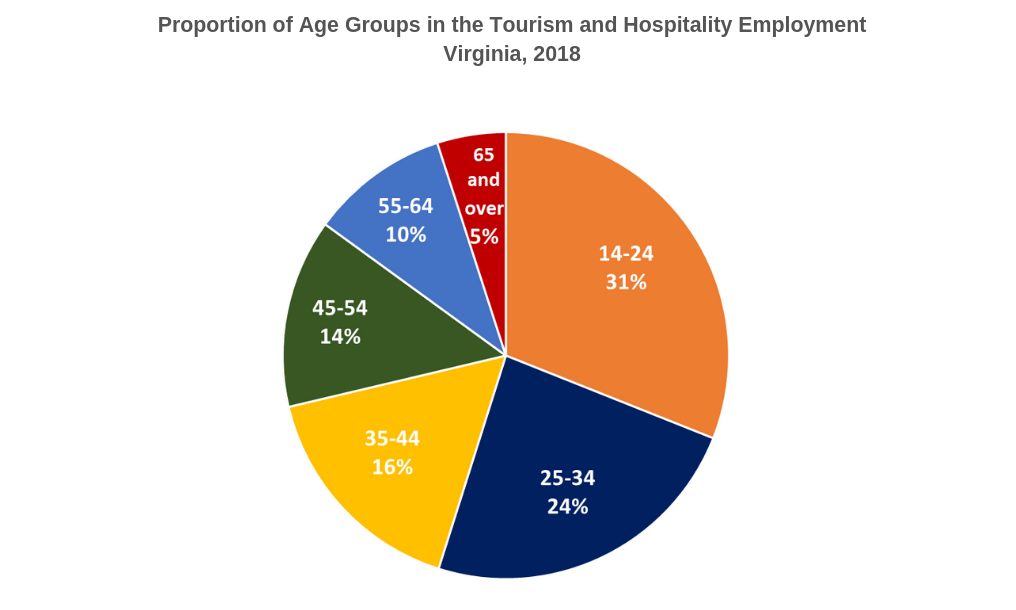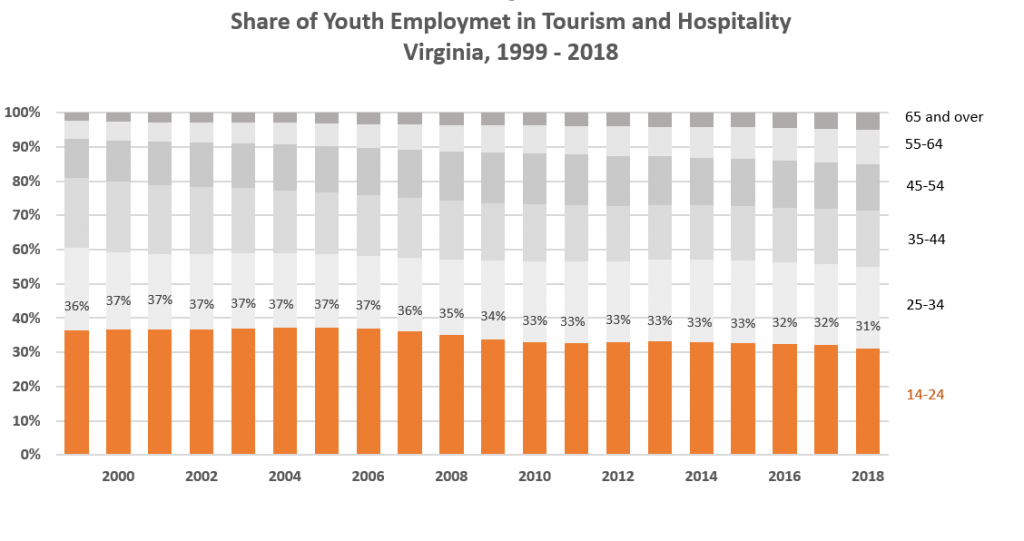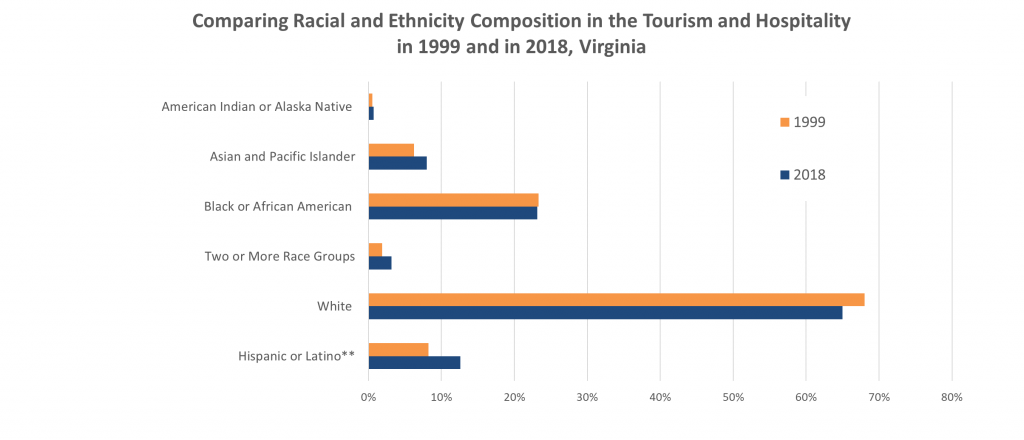Virginia is for Lovers: Jobs in Tourism and Hospitality

Whether you are a Virginia resident or not, you may be familiar with this famous travel slogan: “Virginia is for Lovers.” This iconic tourism campaign slogan, adopted in 1969 by the Virginia State Travel Service, celebrates its 50th anniversary this year, which prompted me to take a look at trends in the Tourism and Hospitality employment in Virginia.
Jobs in the Tourism and Hospitality sector are primarily from three segments: Accommodation; Arts, Entertainment, and Recreation; and Food Service, and Drinking Places. In Virginia, the number of jobs in these segments has increased by 36 percent in the last twenty years, from nearly 295,000 in 1999 to 402,000 in 2018.

In 2018, the Tourism and Hospitality sector accounted for 11 percent of Virginia’s total employment, and over the past two decades, employment in Tourism and Hospitality has seen an upward trend, except in 2009 when employment noticeably declined due to the Recession.
Who works in the tourism and hospitality sector?
Gender
In 2018, women made up 53 percent of the Tourism and Hospitality labor force, compared to 48 percent of the overall workforce in Virginia (2017). In particular, in the Accommodation segment, women accounted for 58 percent of the total employment.

Women, however, do not dominate every segment or occupation in the tourism and hospitality business. In Arts, Entertainment and Recreation, women make up half of the workforce. In the occupation of chef and head cook, for example, only 22 percent are women.

Age Group
In 2018, young people aged 14-24 made up nearly one-third of the sector’s employment in Virginia—the largest among all age groups. However, youth employment in the Tourism and Hospitality sector has been on a downward trend, declining from 37 percent in 2000, to 31 percent in 2018, consistent with the decline of youth in the overall labor force. On the other hand, the proportion of older worker in Tourism and Hospitality workforce grew within the past two decades. Ten percent of the workforce in 2018 were older workers (aged 55-64) compared to the five percent in 1999.


Race and Ethnicity
In the last two decades, while the percent of white workers employed in the hospitality sector has declined, the shares of Hispanic, Asian, and multi-racial workers have all increased, indicating not only the significant population growth among the minority groups, but also the concentrations of their employment in hotel, food preparation and other hospitality jobs.

** Hispanic and Latino refers to “a person of Cuban, Mexican, Puerto Rican, South or Central American, or other Spanish culture or origin regardless of race”
Virginia will continue to be an attractive destination for travelers and tourists, and employment in this sector will continue to grow. According to the latest projections by the Virginia Employment Commission, jobs in the tourism and hospitality sector are expected to increase by 12 percent between 2016 and 2026.


